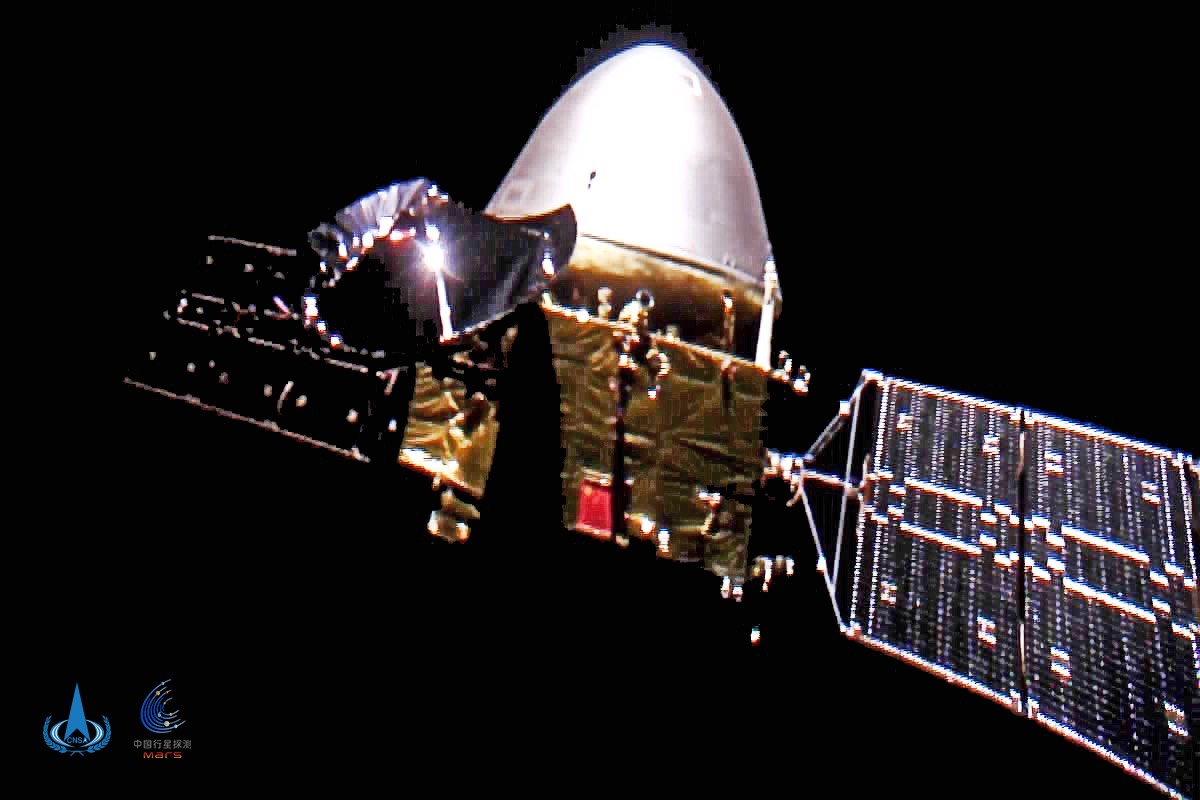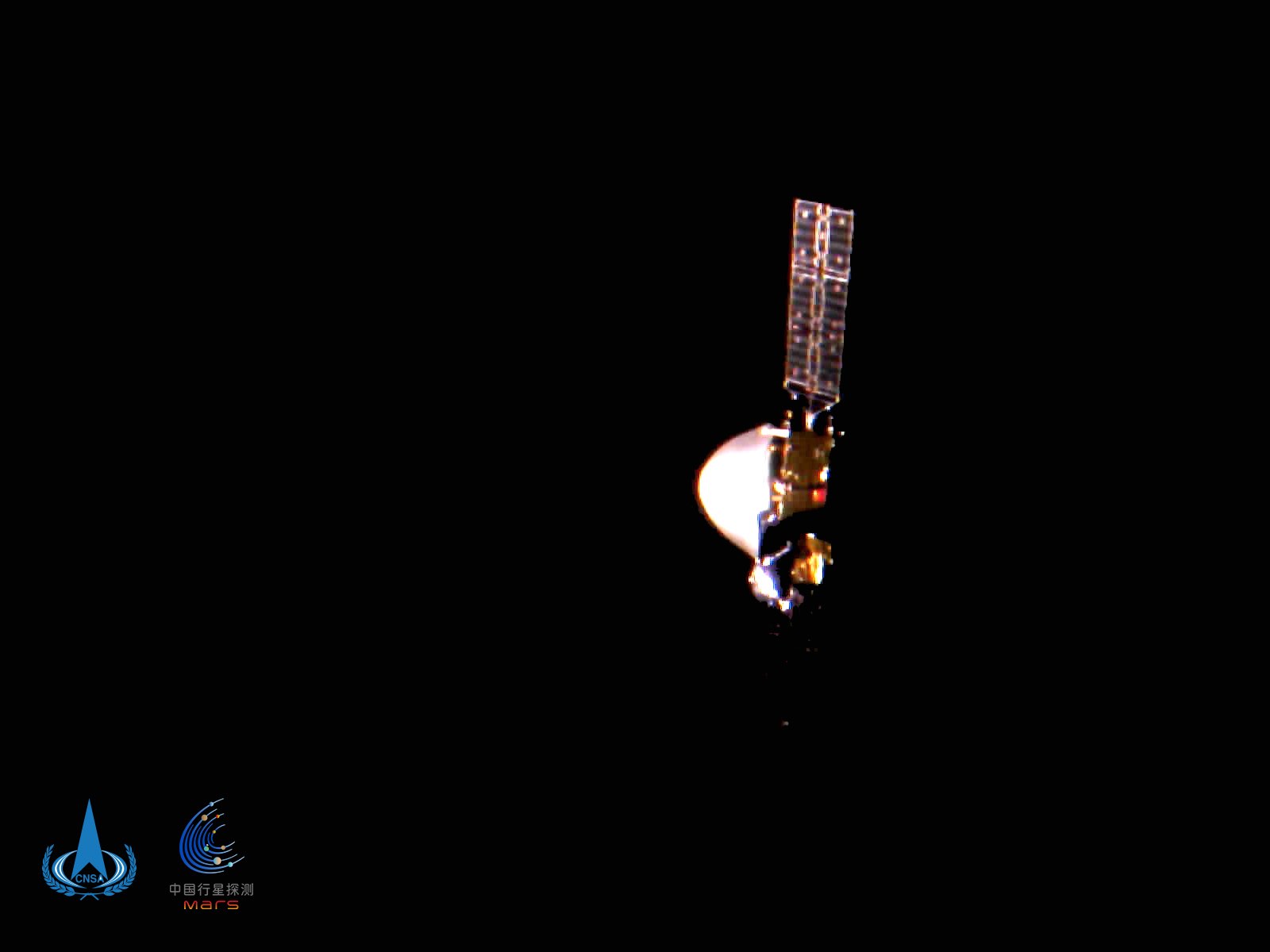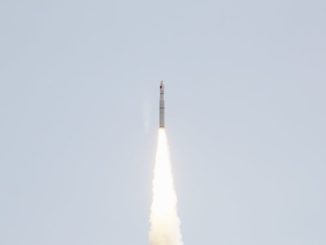
China’s space agency has released images captured by a small camera ejected from the country’s first Mars-bound spacecraft, showing the probe in deep space as it nears the halfway point of its seven-month journey from Earth to the Red Planet.
The images released by the China National Space Administration on Oct. 1 show the Tianwen 1 spacecraft traveling through the blackness of space. Tianwen deployed a small camera to take the self-portrait as it tumbled away from the mothership.
Two wide-angle lenses on the deployable camera were programmed to one image every second. The images were transmitted back to Tianwen via a wireless radio link, then downlinked back to ground teams in China.
In the images, Tianwen 1’s solar array wings and dish-shaped high-gain communications antenna are prominently visible. The white section of the spacecraft is the mission’s entry module and heat shield, which contains a Chinese rover designed to land on Mars and explore the surface.
There’s also a red Chinese flag visible on the spacecraft. The images were released in conjunction with China’s National Day holiday, marking the 71st anniversary of Communist rule there.
The robotic Tianwen 1 spacecraft launched July 23 on a Long March 5 rocket, the most powerful launcher in China’s fleet. So far, the probe has performed two mid-course correction maneuvers to fine-tune its path toward Mars, setting up for a critical burn to enter orbit around the Red Planet in February.

Once in orbit, the Tianwen 1 spacecraft will survey candidate landing sites for two-to-three months before releasing the lander and rover to enter the Martian atmosphere.
If China pulls off those feats according to plan, they will make China the third country to perform a soft landing on Mars — after the Soviet Union and the United States — and the second country to drive a robotic rover on the Red Planet.
The Tianwen 1 orbiter, which will continue its mission after releasing the lander and rover, is designed to operate for at least one Martian year, or about two years on Earth. The solar-powered rover, fitted with six wheels for mobility, has a life expectancy of at least 90 days, Chinese officials said.
Chinese scientists say the Tianwen 1 mission will perform a global survey of Mars, measuring soil and rock composition, searching for signs of buried water ice, and studying the Martian magnetosphere and atmosphere. The orbiter and rover will also observe Martian weather and probe Mars’s internal structure.
The Tianwen 1 mission is one of three spacecraft currently on the way to Mars. NASA’s Perseverance rover and the Hope orbiter developed by the United Arab Emirates also launched in July, and are on track to arrive at Mars in February.
Email the author.
Follow Stephen Clark on Twitter: @StephenClark1.



